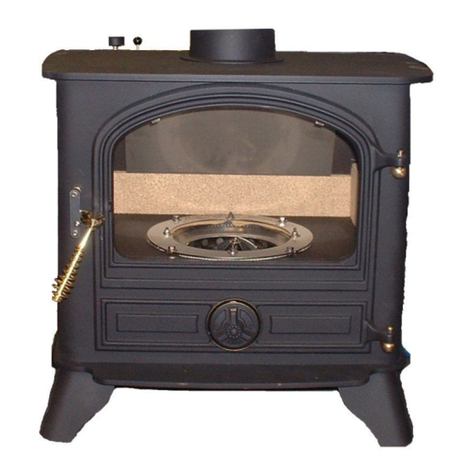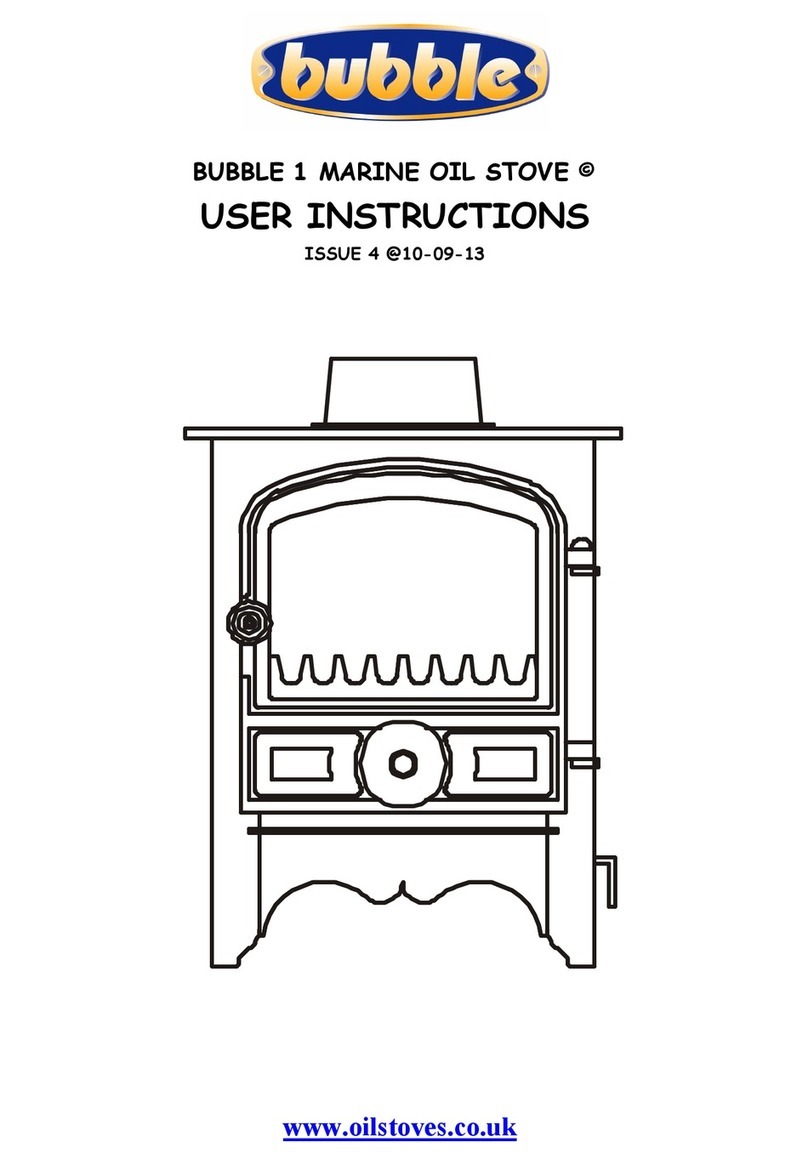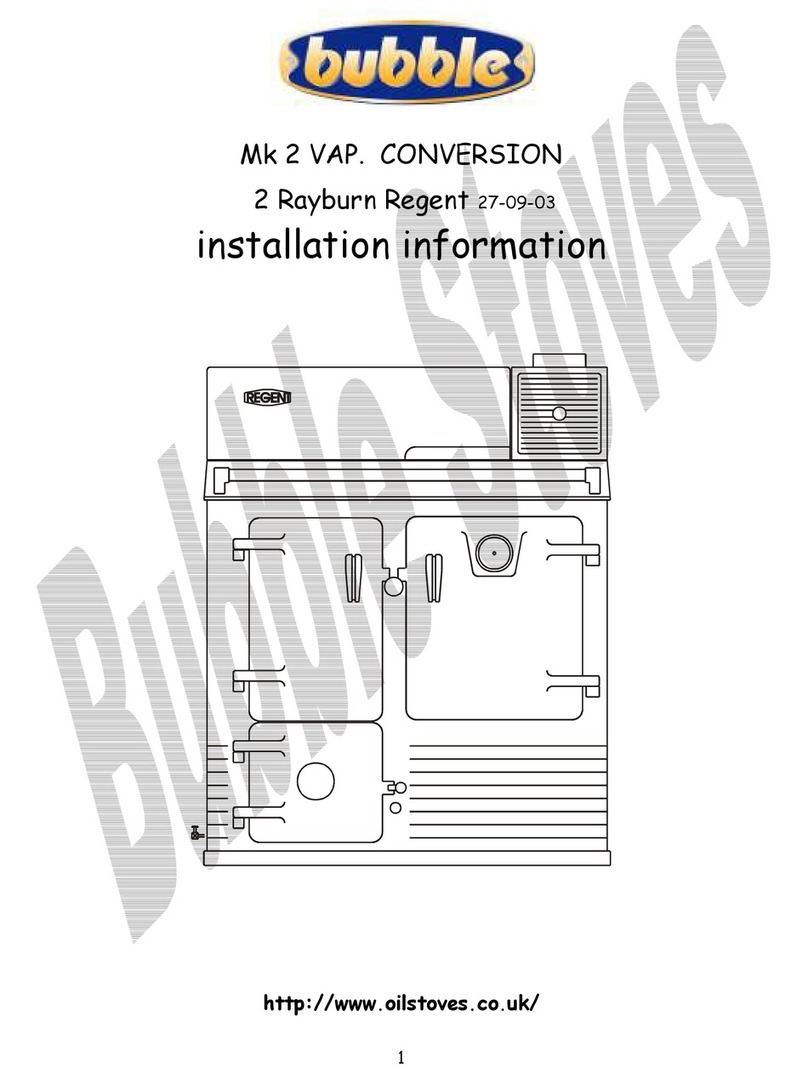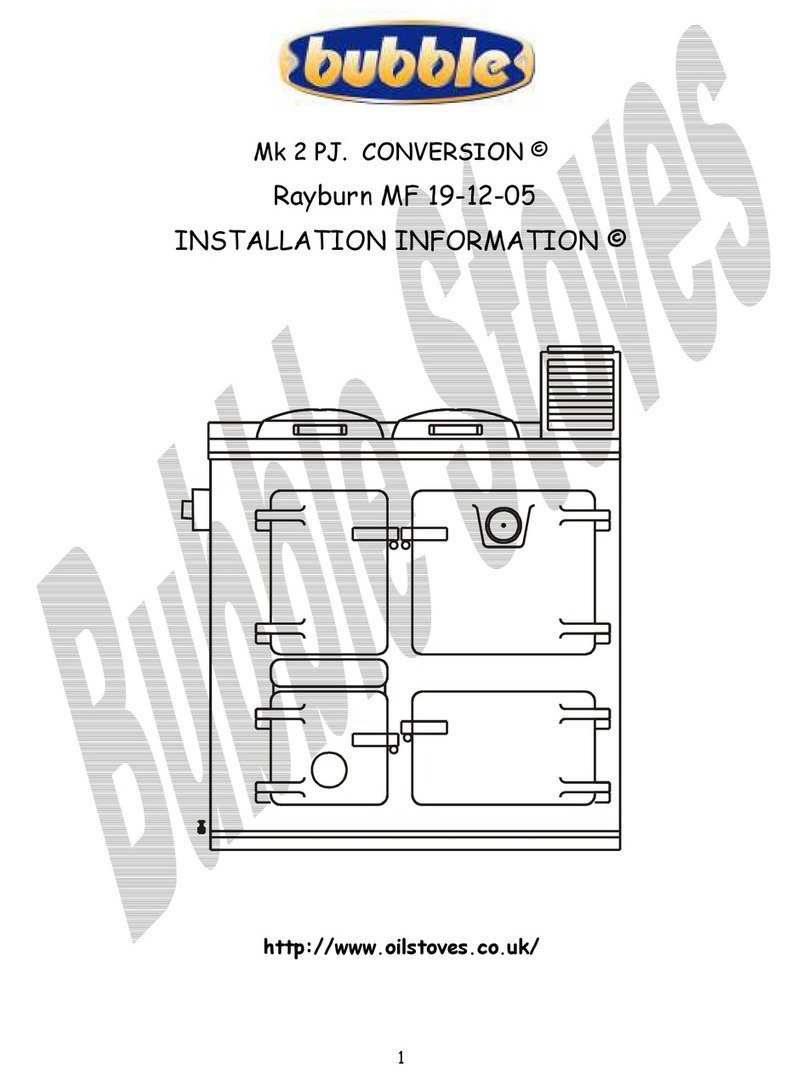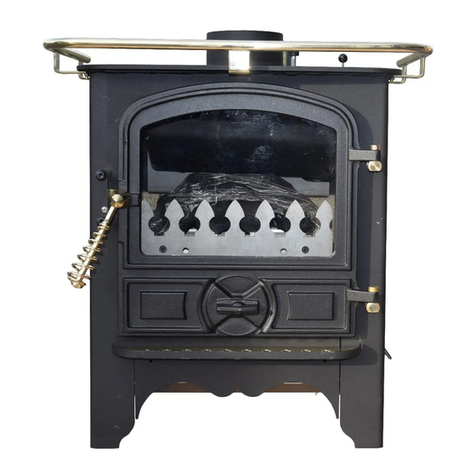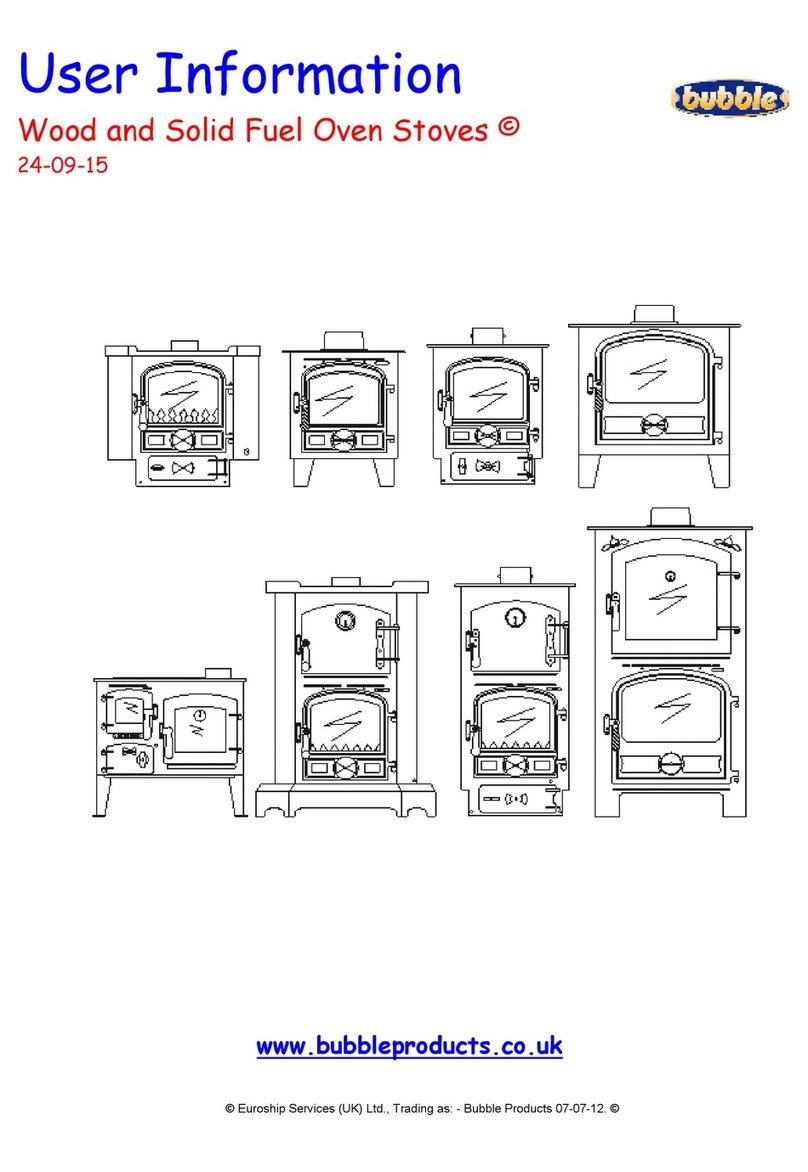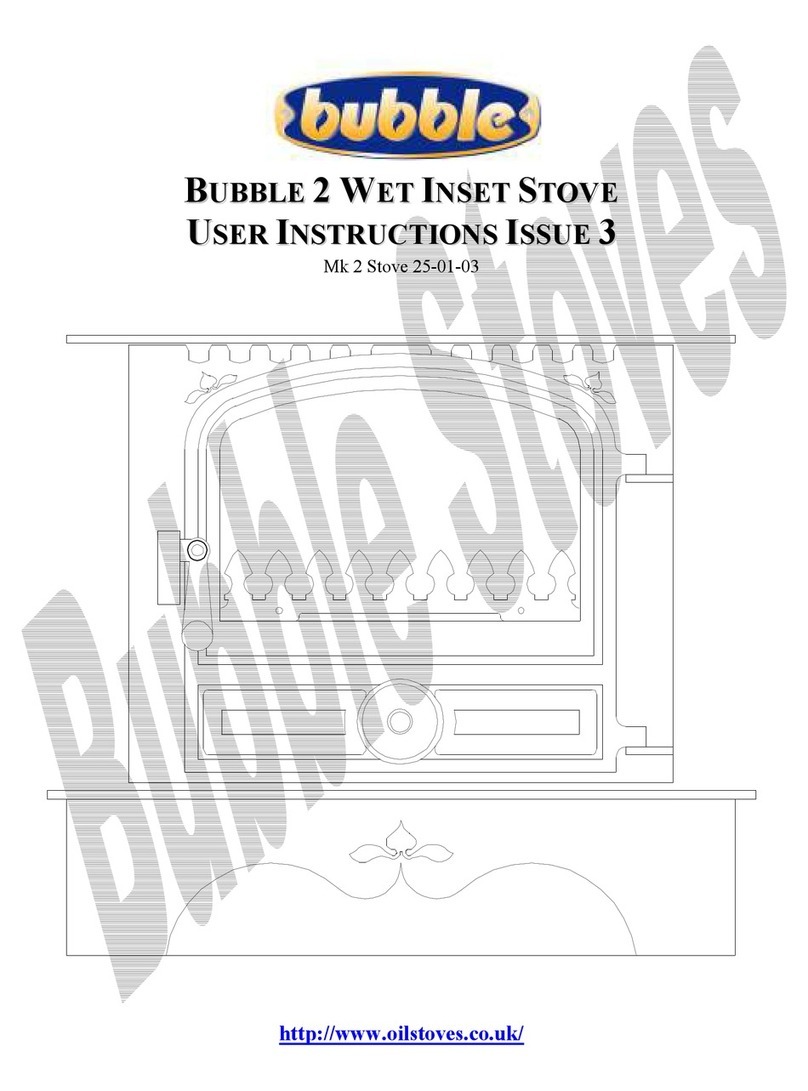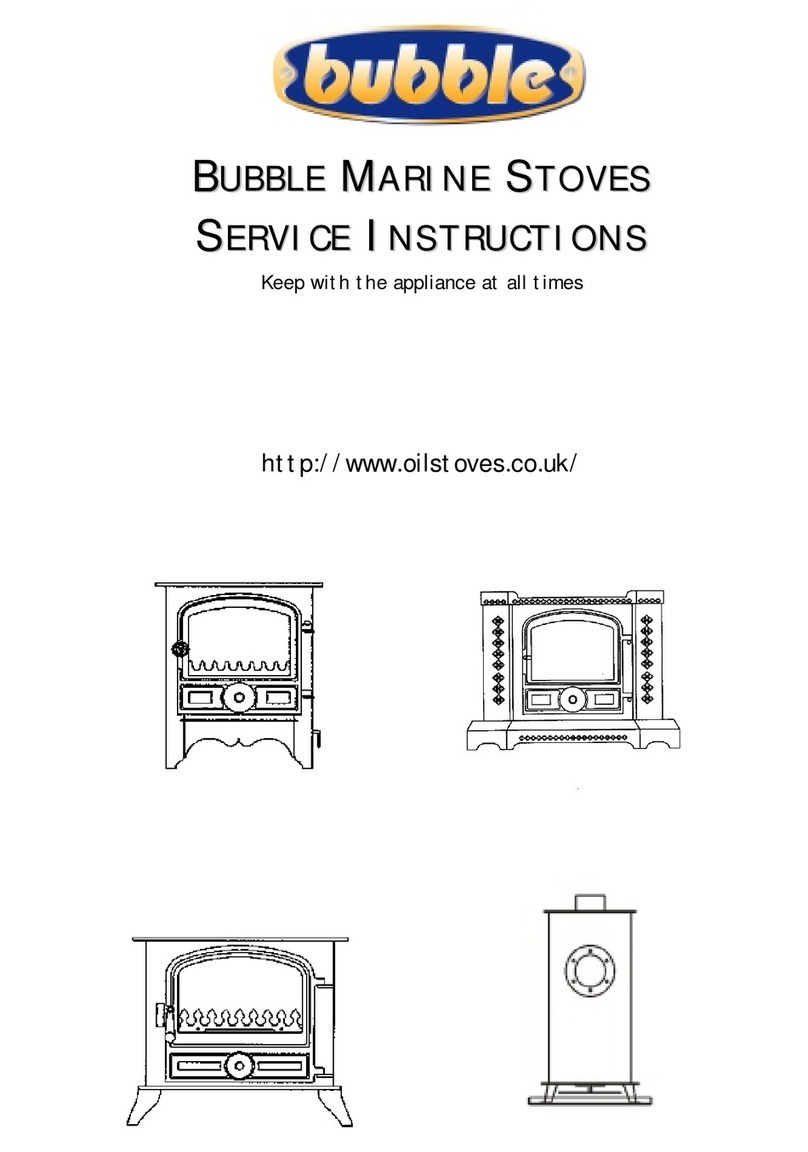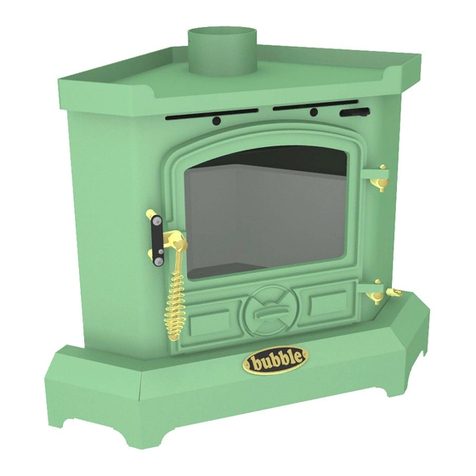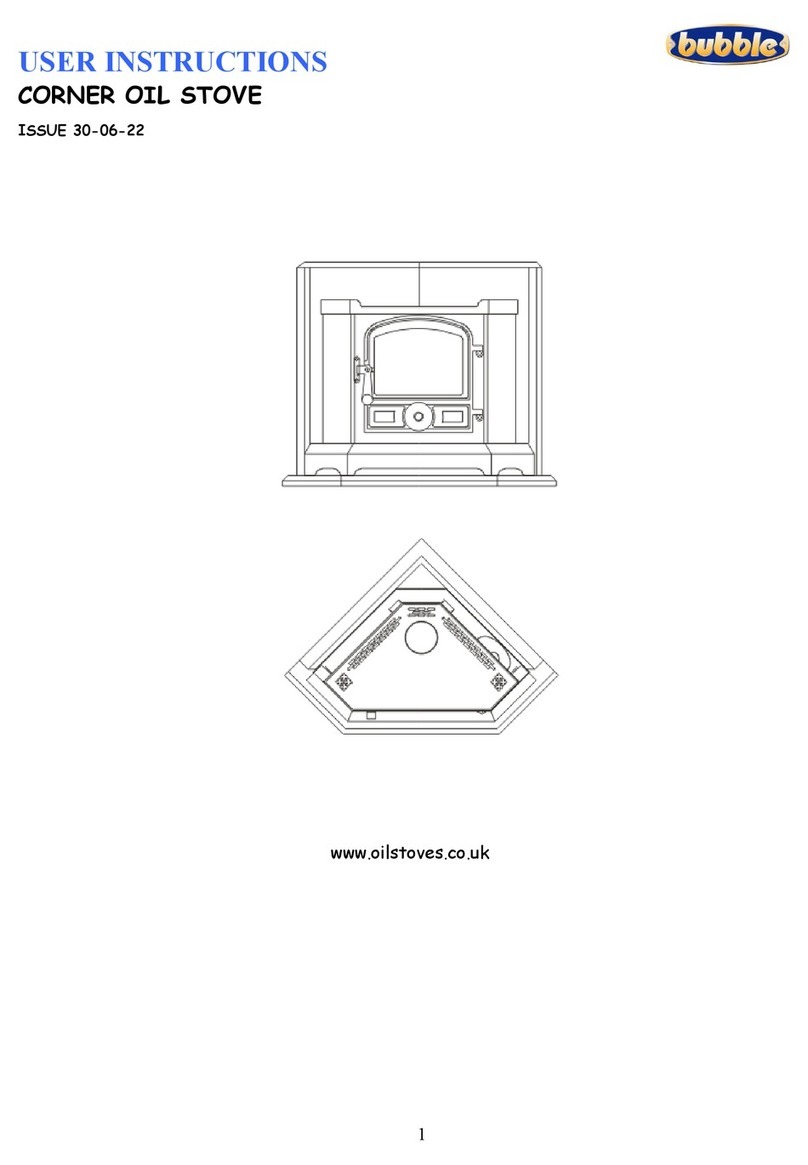Wait for approx 1 minute until the pool of oil is alight
and then turn the oil on to minimum setting no 1.
Watch the appliance for a few minutes and you will see
the flame establish and settle down into blue flame
combustion.
Allow the burner to run for a further 10 minutes
before turning the appliance up to the higher settings.
If at any time during the ignition process large
amounts of flame can be seen, turn the oil off
immediately and wait until the flames die down
before putting the oil on again at minimum setting.
2. MANUAL LIGHTING THROUGH THE LIGHTING PORT
Always make sure that the pot is not flooded with oil.
Make sure that the oil is turned off and make sure
that the oil safety cut off knob is lifted (tripped on)
via an audible click
, if there is no click then the valve
will be in a cocked on state.
Open the front door.
Remove the lighting port plug by pulling it out of its
tubular socket.
Turn the oil on to the first position via the flow
control knob and allow a small pool of oil to flow into
the pot about the size of a small biscuit.
TURN THE OIL OFF.
Cut a small piece of firelighter and stab it onto the
spike.
Light it and push it into the lighting port tube, let the
firelighter drop off the spike into the bottom of the
pot.
Replace the lighting port plug back into the tube and
close the cover.
Close the front door.
Wait for approx 1 minute until the pool of oil is alight
and then turn the oil on to minimum setting no 1.
Watch the appliance for a few minutes until it settles
down into blue flame combustion.
Allow the burner to run for a further 10 minutes
before turning the appliance up to the higher settings.
If at any time during the ignition process large
amounts of flame cane be seen, turn the oil off
immediately and wait until they die down before
putting the oil on again.
EXCESS FLAMES DURING IGNITION
If at any time during the ignition process large
amounts of flame can be seen, turn the oil off
immediately and wait until they die down before
putting the oil on again.
When the burner has been running for ten to fifteen
minutes move the oil flow control knob round to
position 3 and leave for another ten minutes after
which it will be safe to run the burner up to full
output.
CORRECT LOW FIRE RUNNING
When the burner is running correctly on position 1
(LOW FIRE) the lower catalyser will be glowing dull
red with little blue flames shooting into the lower
catalyser. The blue flames should just be showing over
the top of the lower catalyser.
Keep an eye on the low fire and if a dirty yellow flame
can be seen in the bottom and to one side of the
burner pot, call back your service man to re adjust the
oil flow.
CORRECT HIGH FIRE RUNNING
When the burner is running correctly on high fire the
flame picture should comprise of a large conical blue
flame just tipping with little yellow tips, the blue cone
should be approc150 -170mm above the top of the pot.
Stoves with Coal Kit
On full output, after approximately ten minutes, the
coals should begin to glow red and there should be
wispy blue flames licking through them.
To get the maximum effect the stove will need to be
left for half an hour or so, if there are a lot of yellow
flames call back your service man to re adjust the oil
flow, a few yellow flames are acceptable.
Excess oil flow, poor flue vacuum, bad coal positioning
or bad lighting technique can all contribute to rapid
sooting of the glass and coals.
NEVER TRY TORELIGHT A HOT STOVE
NEVER TRY TO RELIGHT A HOT BURNER, MAKE
SURE THAT THE BURNER IS COMPLETELY COOLED
DOWN BEFORE RE LIGHTING.
EXTINGUISHING THE STOVE
Shutting the burner off is a very simple manoeuvre.
Turn the oil flow control knob FULLY in a clockwise
direction until you feel it stop in its off position.
After a few minutes, the flame will die down and
eventually extinguish itself.
DO NOT TOUCH THE STOVE UNTIL IT HAS
COMPLETELY COOLED DOWN.
NEVER TRY TO RE LIGHT A HOT BURNER, MAKE
SURE THAT THE BURNER IS COMPLETELY
COOLED DOWN BEFORE RE LIGHTING.
FUEL SUPPLY INFORMATION
Your Fuel is stored in an oil tank, which should
incorporate the following features.
FUEL GAUGE
A fuel gauge, which can be in the form of a numbered
circular dial or a site glass into which oil is fed so as to
indicate the amount of oil in the tank.
ISOLATION VALVE
A manually operated isolation valve on the tank,
usually a gate valve.
